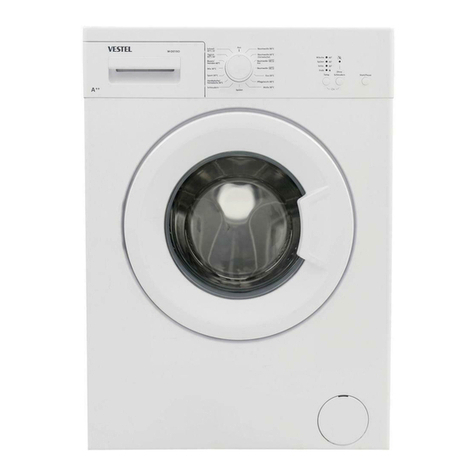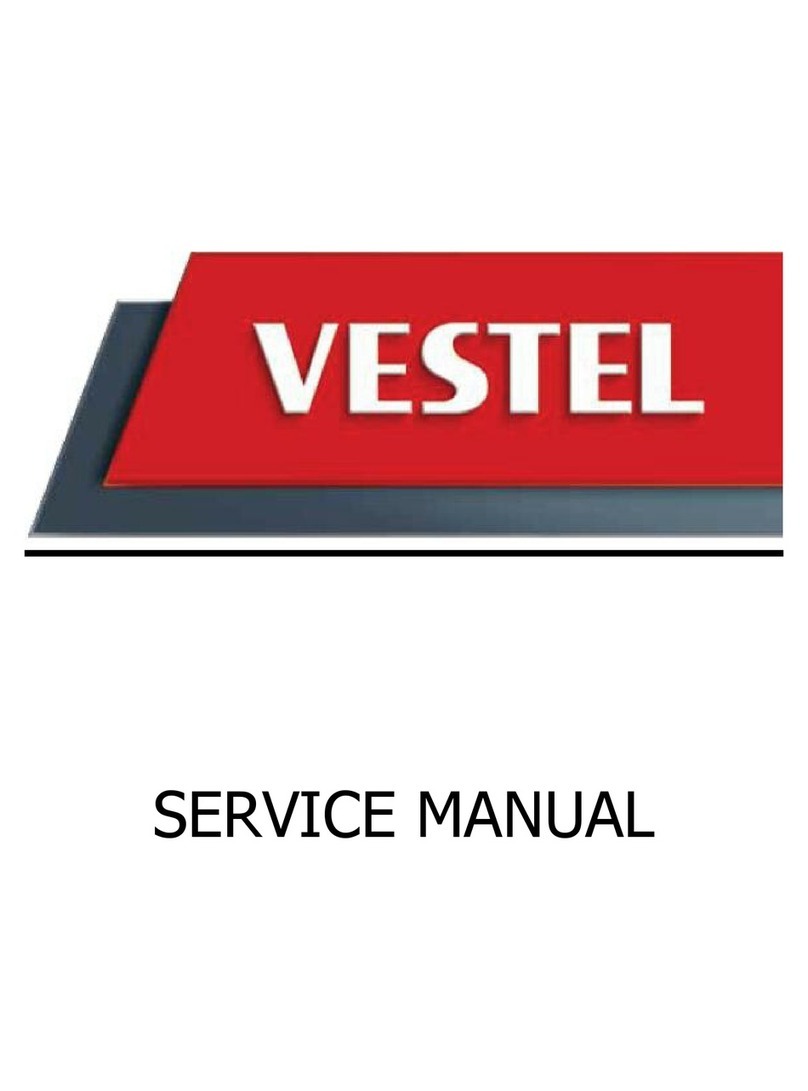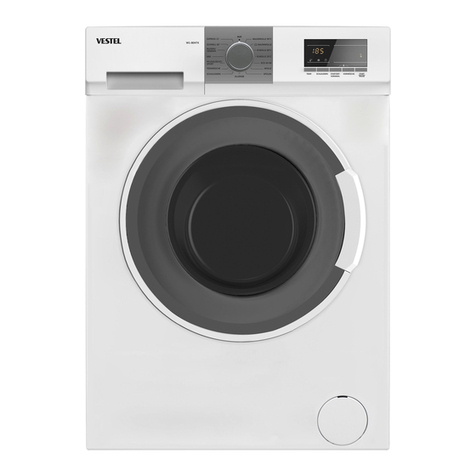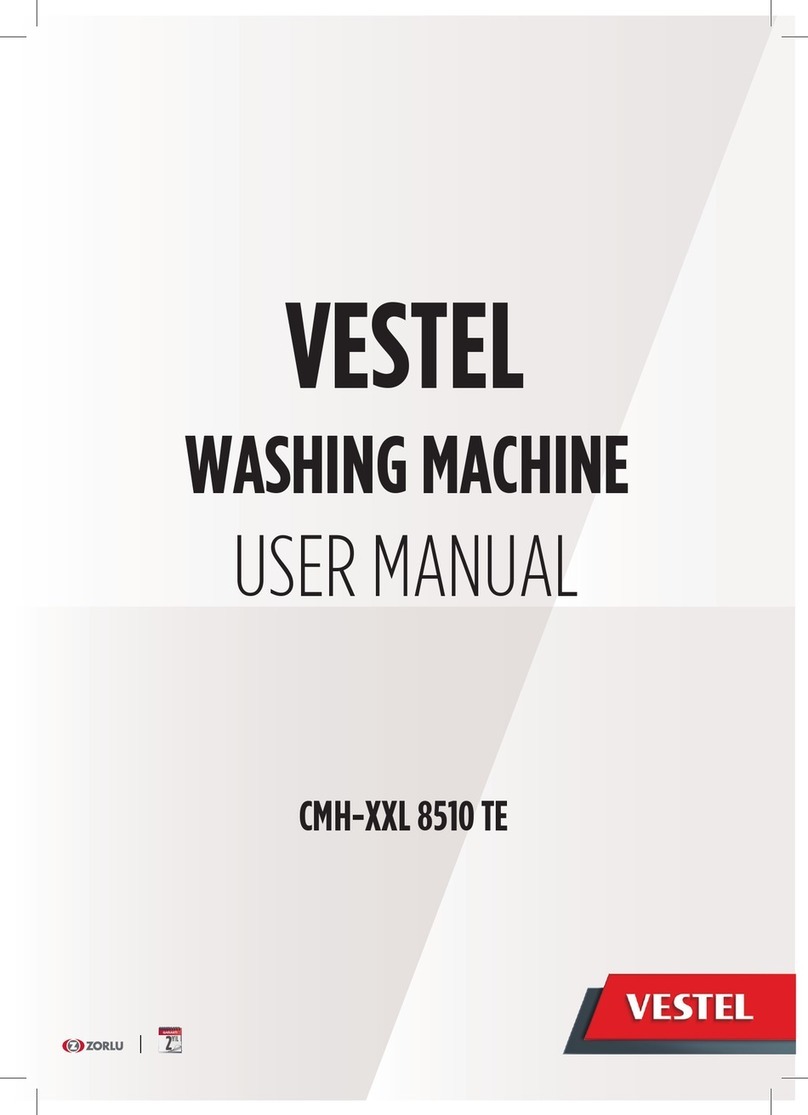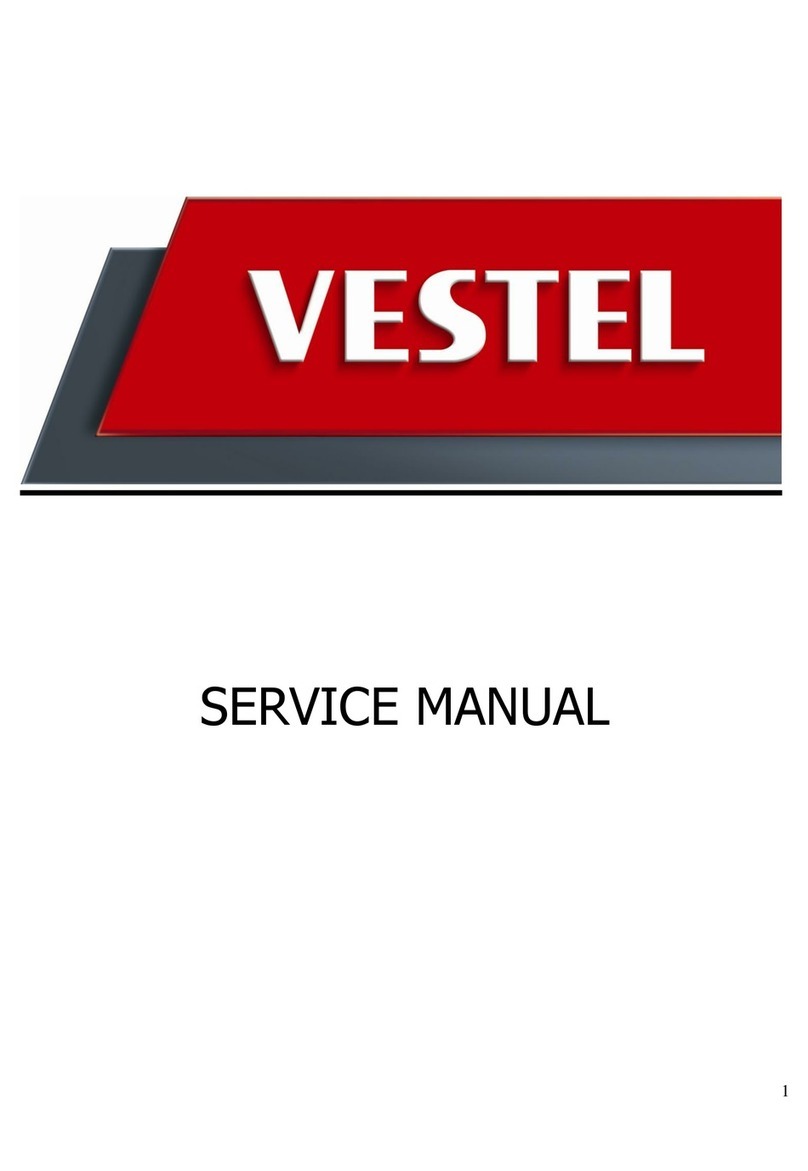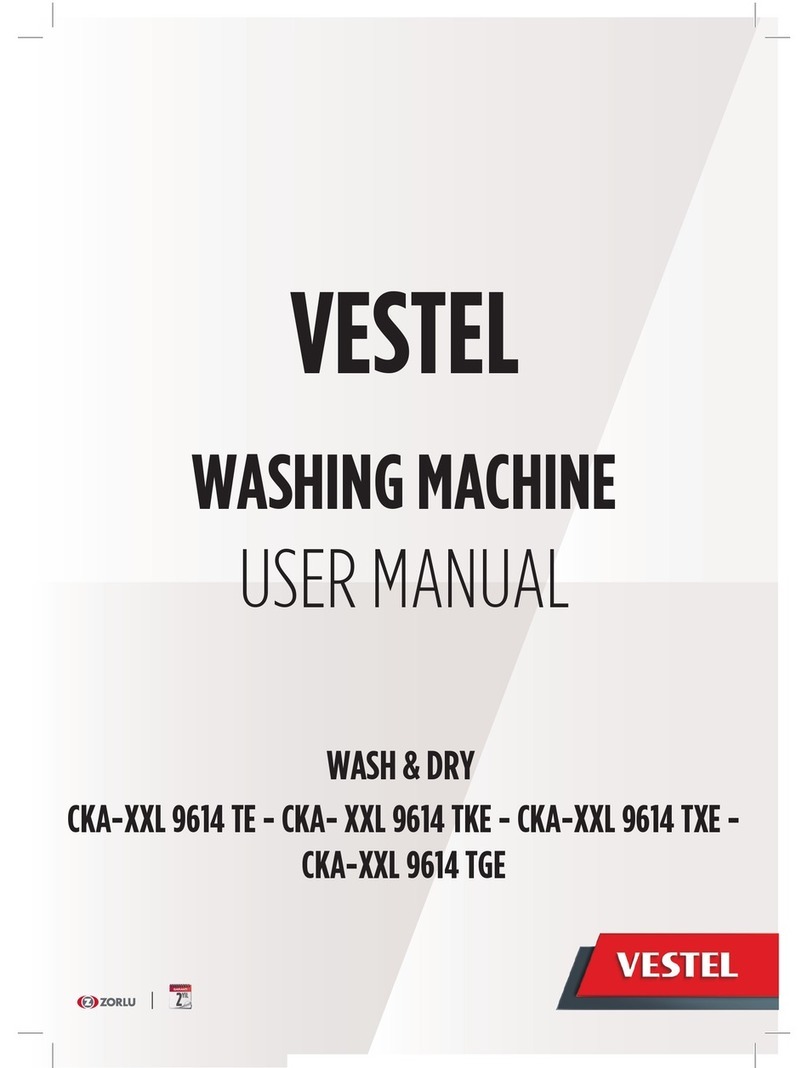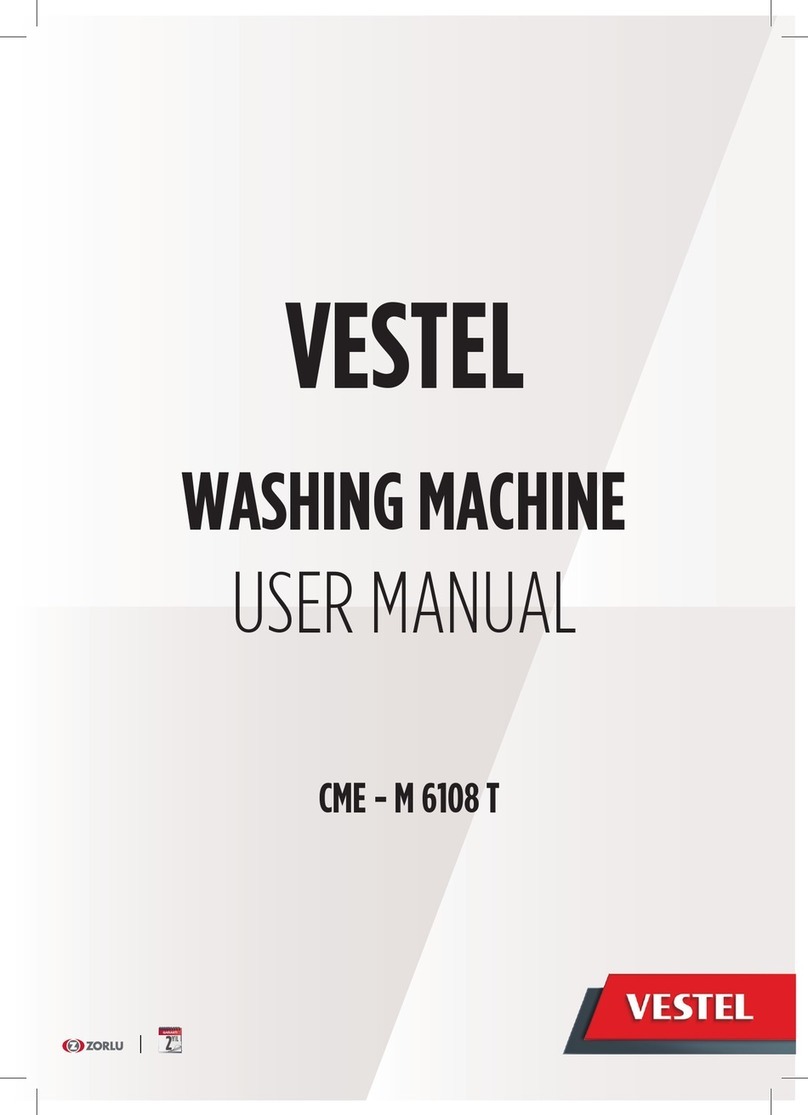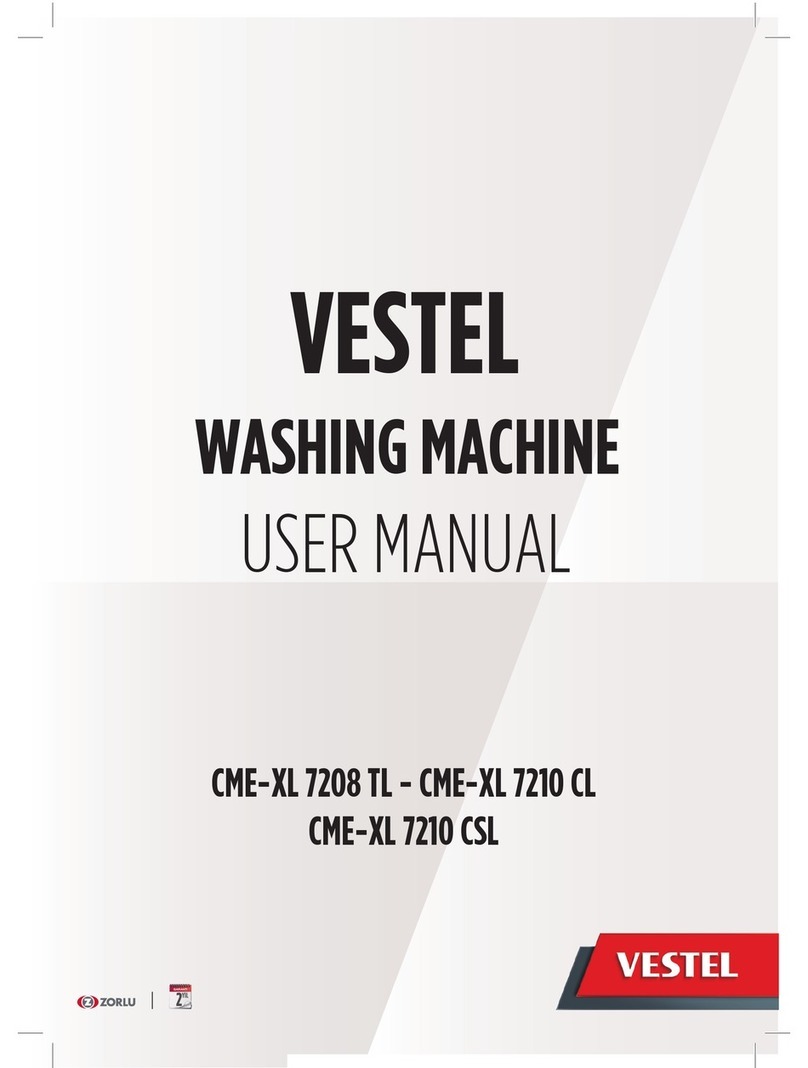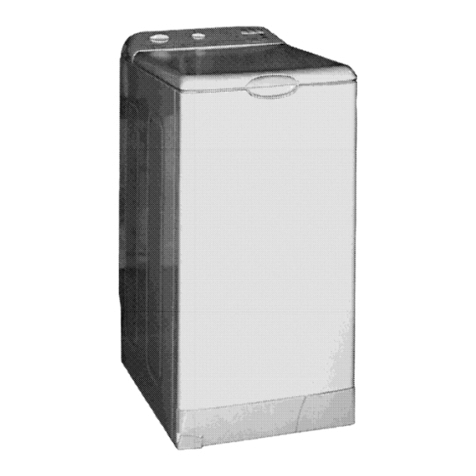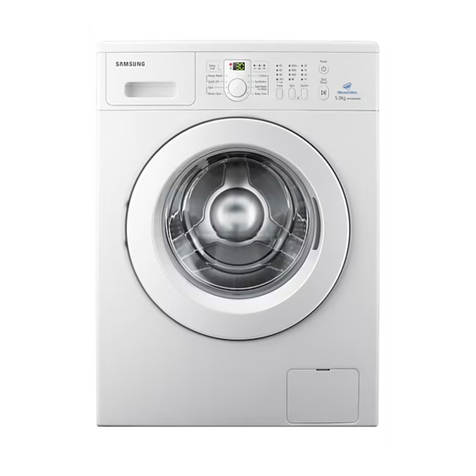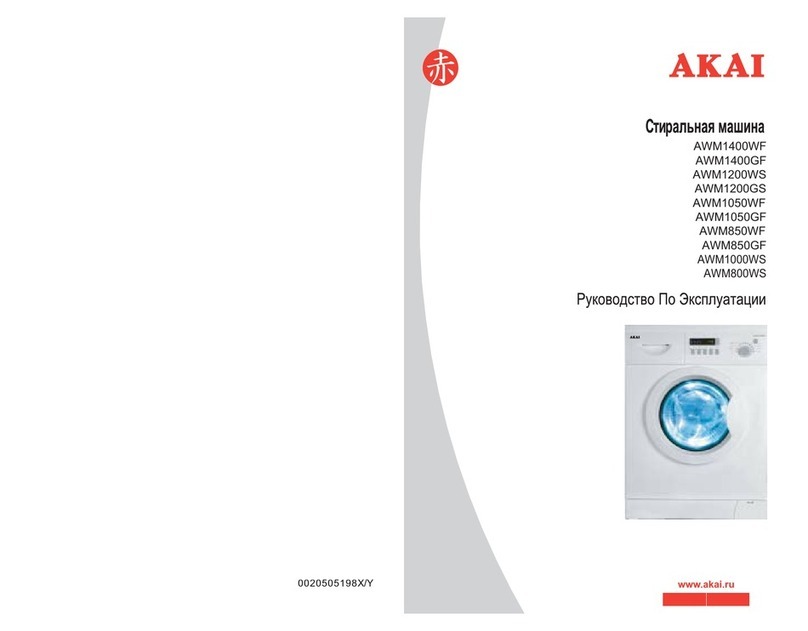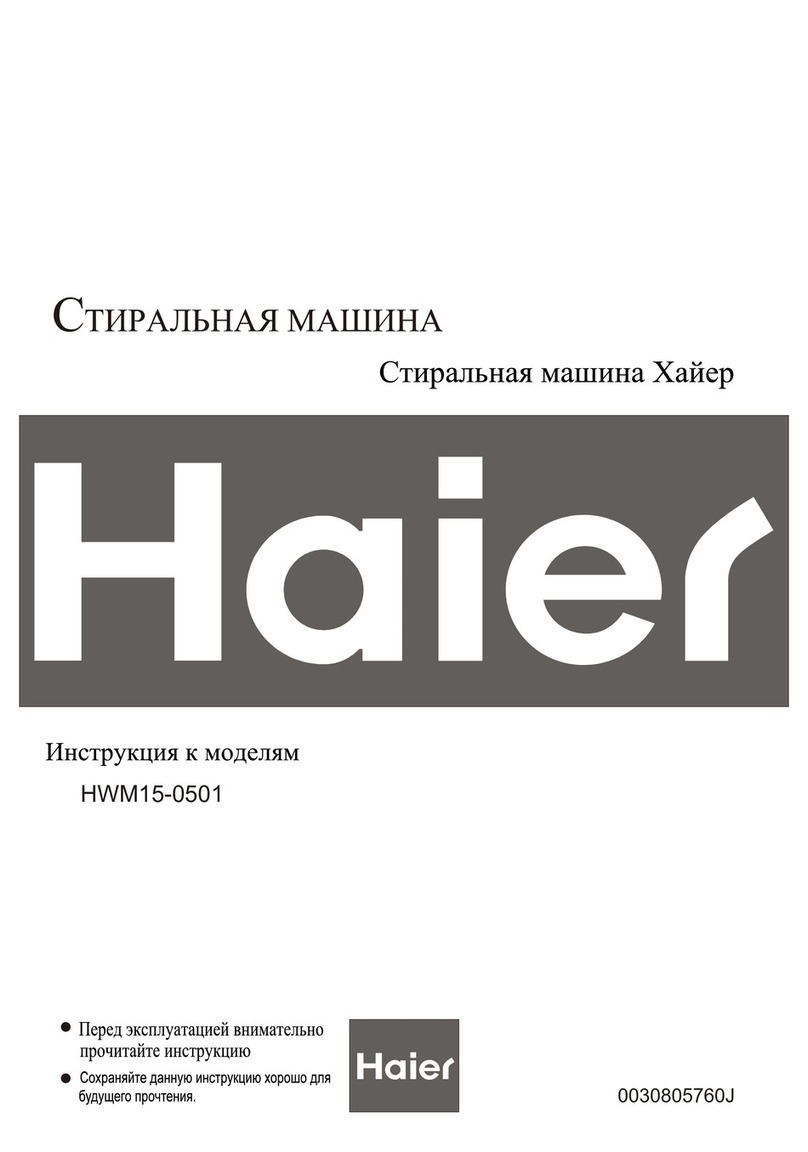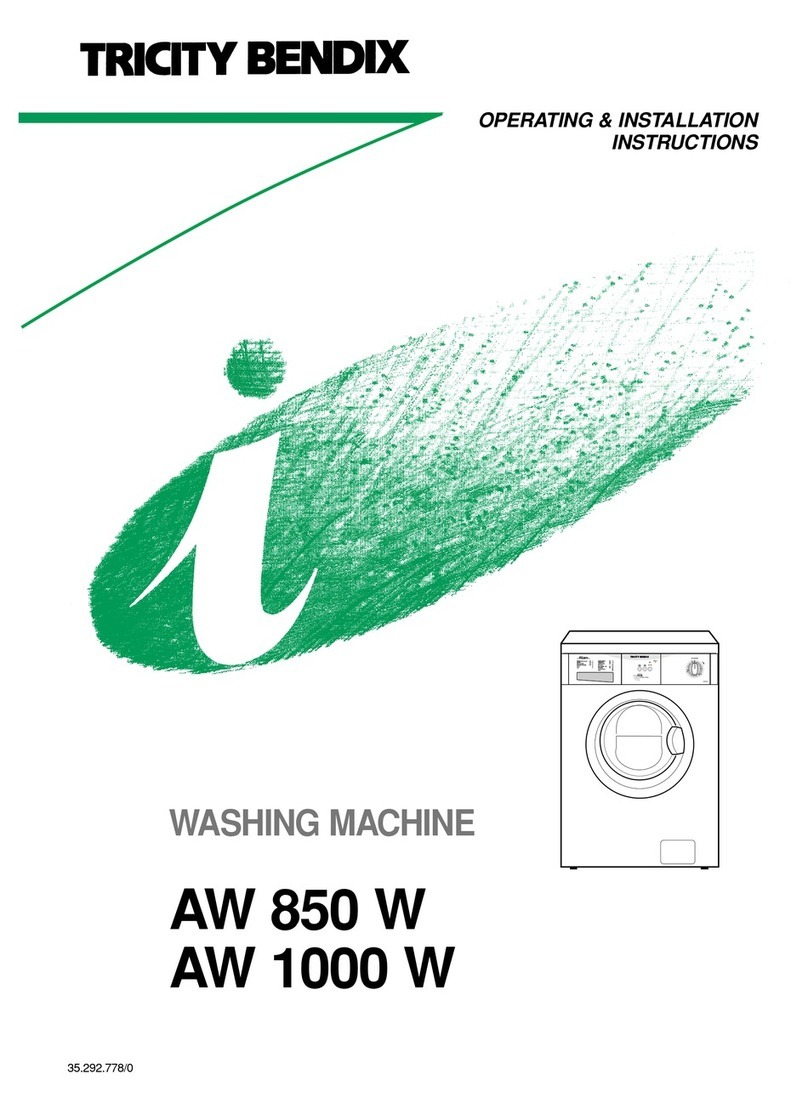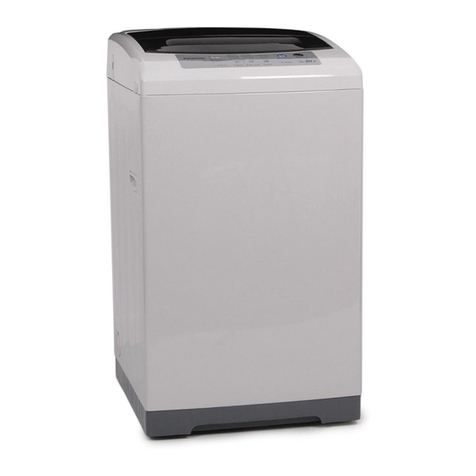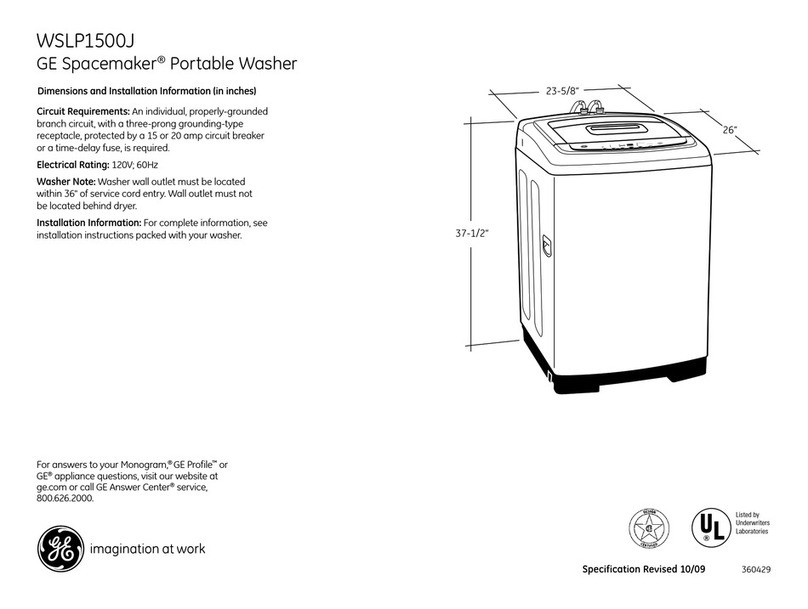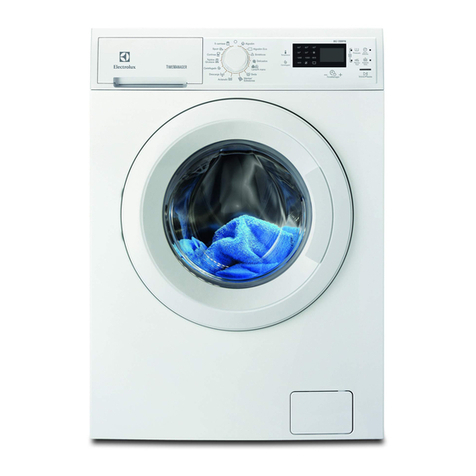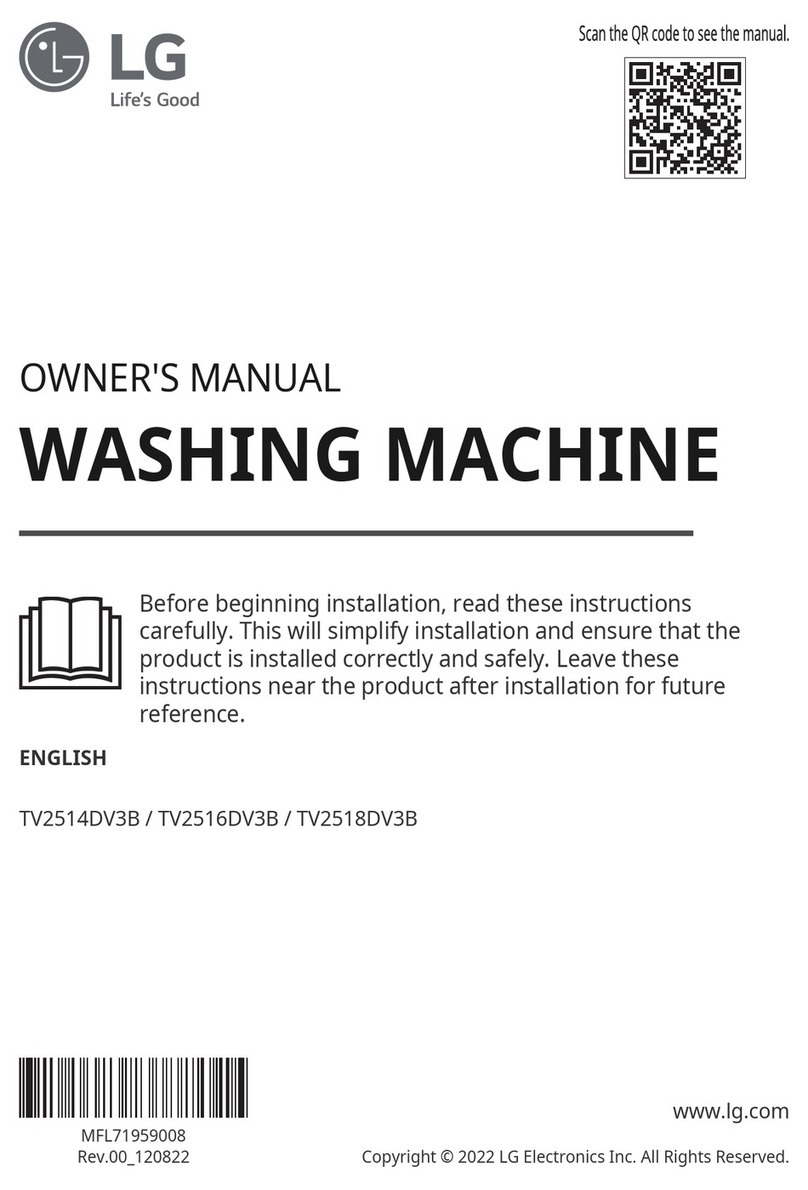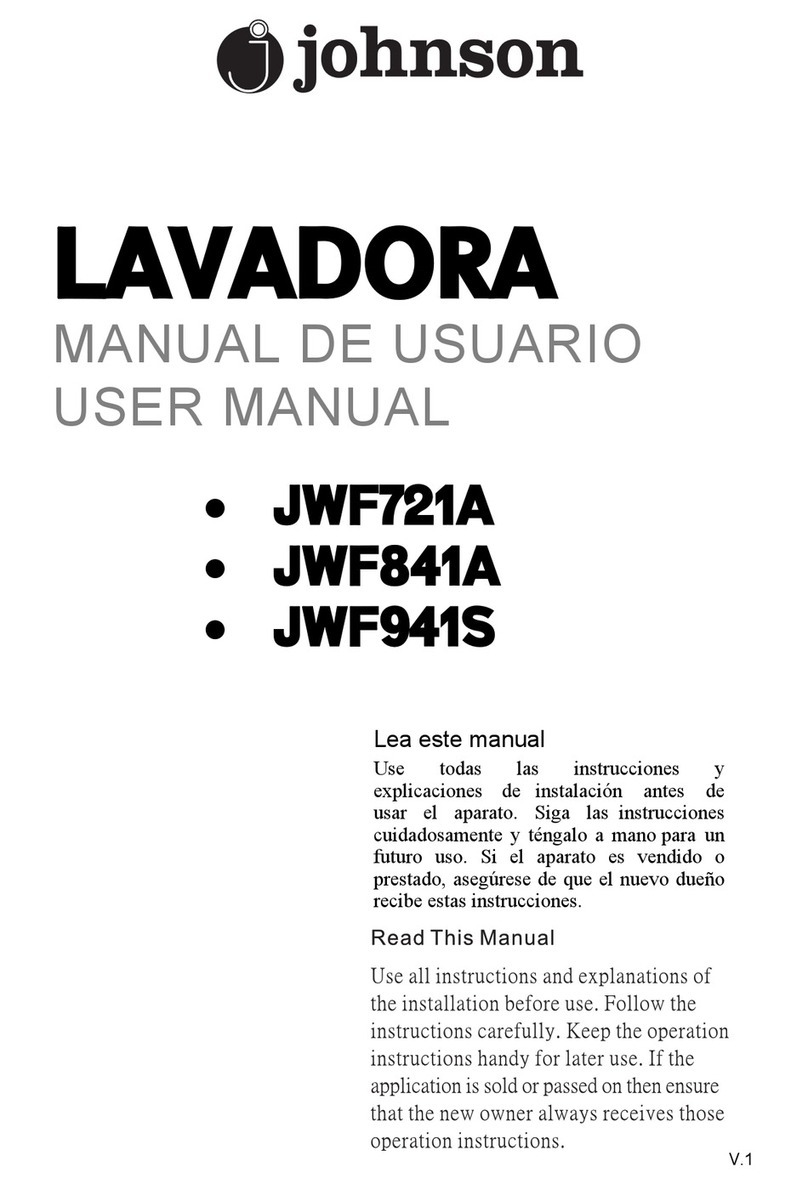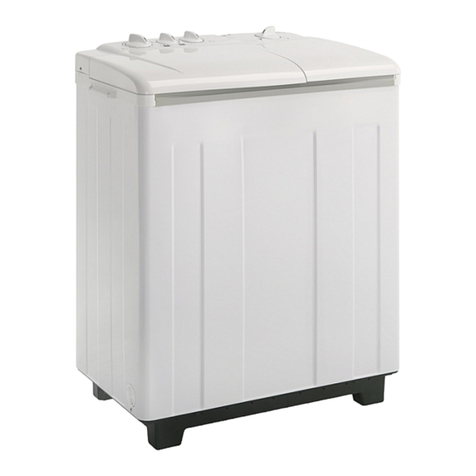If you turn knob position to other program between 1st to
3rd it will skip current test and start the selected one. It is
recommended not to skip any steps for a detailed
checkup. Unlike autotest, service autotest starts next test
step manually by rotating program selection knob.
Step1:
There will be a certain amount of water intake and then washer heater is
activated for 8 minutes. Washer NTC values are checked in this period.
In case of a washer heater/NTC failure, it pops up E05 error displaying
“E05” on SW3.
At the end of heating, "SAU" visualization should make slow blink to
indicate that the step is over. You can turn program knob to 2nd position
to continue with step2.
*During this step if EPS detects high water level, overflow algorithm is
applied and E04 is released.
Step2:
Drain pump is activated; in case of a pump failure it pops up E03 error.
At the end of pump activation, "SAU" visualization should make slow
blink to indicate that the step is over. You can turn program knob to 3rd
position to continue with step3.
Step3:
Dryer Heater I and fan is activated. After 3 mins if there will be no
temperature change (ΔT< 10°C), it will release E14 failure.
If temperature increases accordingly (ΔT > 10°C), "SAU" visualization
should make slow blink to indicate that the step is over. You can turn
program knob to 4th position to continue with step4.
Step4:
Dryer Heater II and fan is activated. After 3 mins if there will be no
temperature change (ΔT< 10°C), it will release E14 failure.
If temperature increases accordingly (ΔT > 10°C), "SAU" visualization
should make slow blink to indicate that the step is over. You can turn
program knob to 5th position to continue with step5.
Step5:
Rapid 15’program algorithms is run to test all washing components, the
only difference is error codes are displayed which normally are not
displayed to end user.
If no error found in test program ”SAU" visualization should make slow
blink to indicate that the step is over. You can turn program knob to 6th
position to continue with step6.
Step6:
A 5 mins drying program is run to test all drying components.
If case of no error service autotest ends and "End" is displayed.
*If user changes the selector position, machine will do what is defined
for the new selected position.
